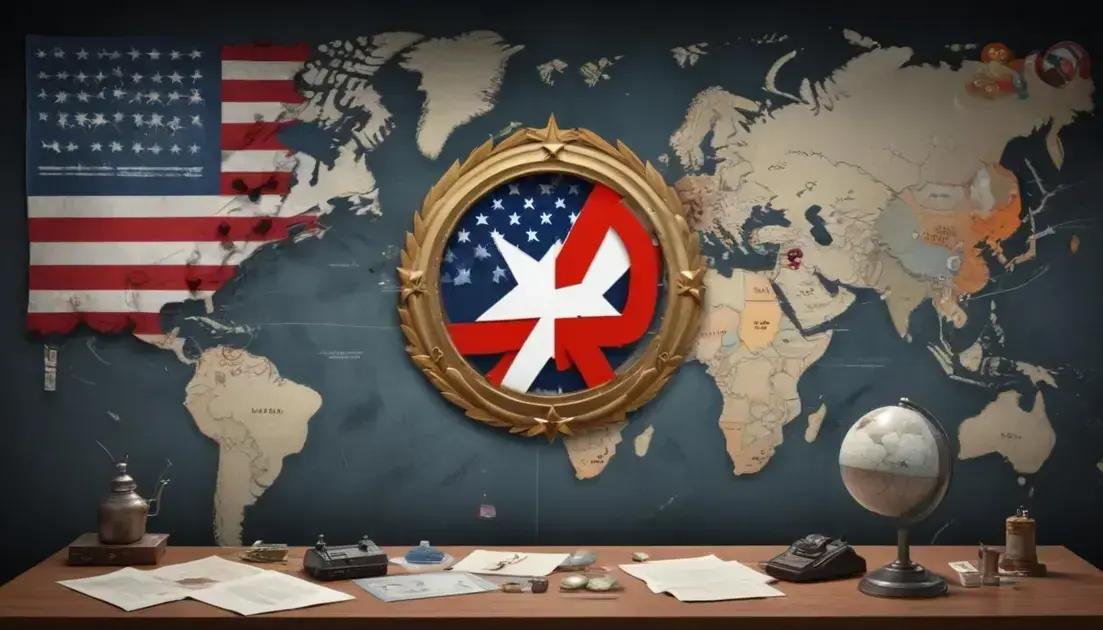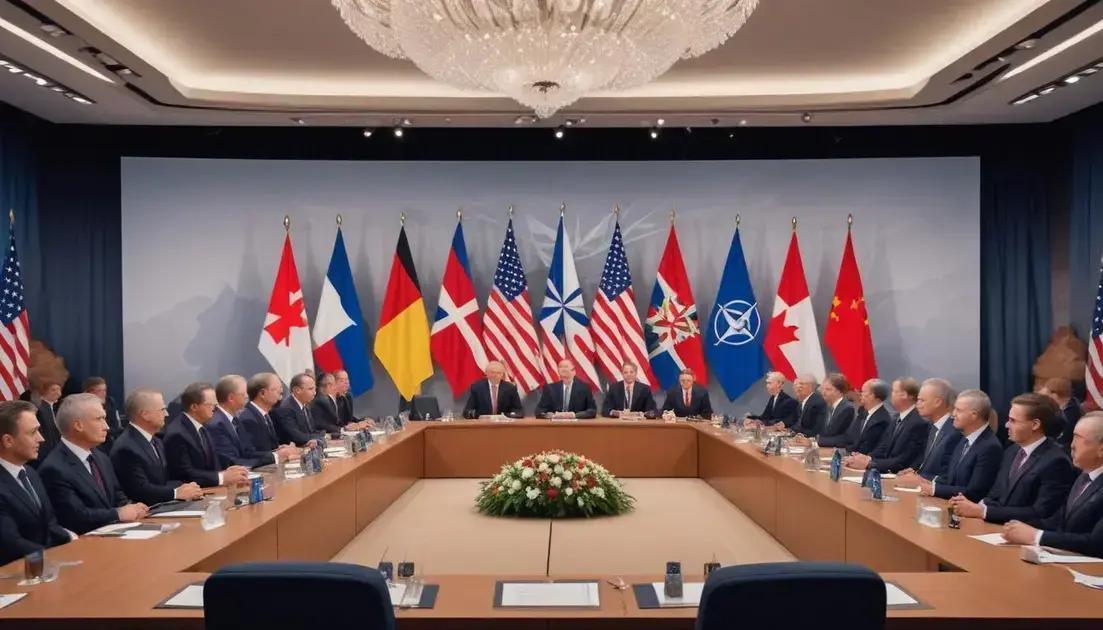
How the Cold War never really ended
The Cold War, a significant period of tension between the United States and the Soviet Union, continues to influence today’s global landscape. Key events like NATO formation, the Cuban Missile Crisis, and the Vietnam War shaped diplomatic strategies and cultural exchanges. Understanding the Cold War’s legacy helps us navigate current international relations and promotes cooperation to address today’s challenges, emphasizing the importance of dialogue and education for future generations.
Ever wondered how the Cold War still influences our world today? This deep-rooted divide shapes geopolitics and will impact future generations. Let’s dive into this intriguing legacy.
The Beginning of the Cold War
The Cold War began after World War II, marking a time of tension between two superpowers: the United States and the Soviet Union. This was a conflict of ideas, with each side believing their way of life was better. The U.S. wanted to spread democracy and capitalism, while the USSR aimed to promote communism.
In 1947, a key moment occurred with the Truman Doctrine. This policy was about containing communism’s spread. It stated the U.S. would support countries fighting against communist movements. This showed how serious America was about stopping the influence of the Soviet Union.
Another major event was the Berlin Blockade in 1948. The USSR blocked all ground access to West Berlin. In response, the U.S. and its allies organized the Berlin Airlift. They flew in supplies to the people of West Berlin for nearly a year. This effort highlighted how far both sides would go to defend their ideals.
With time, more conflicts arose, such as the Korean War in the early 1950s. This war was another battle between communism and democracy. It involved many countries and showcased the global reach of the Cold War rivalry.
As the years passed, the Cold War shaped international relations. It wasn’t just military; it was cultural too. Each side tried to win hearts and minds around the world. Festivals, music, and films were all used to promote their way of life. The world was divided not just by politics, but by culture and ideology as well.
Key Events That Defined the Cold War
Several key events shaped the Cold War and defined its course. One of the first was the formation of NATO in 1949. This military alliance included the U.S. and several Western European nations. It aimed to protect against any Soviet aggression.
Another significant event was the Cuban Missile Crisis in 1962. The world held its breath as the U.S. and the USSR faced off over nuclear missiles in Cuba. This dangerous standoff brought the two superpowers to the brink of war. It showed how quickly tensions could rise.
The Vietnam War is also a critical piece of Cold War history. The U.S. got involved to stop the spread of communism in Southeast Asia. This conflict caused deep divisions at home and raised questions about U.S. foreign policy.
In 1968, the Prague Spring marked a brief period of reform in Czechoslovakia. The Soviet Union quickly crushed these changes with military force. This event showed that the USSR was unwilling to allow any challenge to its control in Eastern Europe.
The late 1970s and early 1980s saw a mix of tension and competition. The U.S. and USSR focused on building up their nuclear arsenals. The arms race meant both sides aimed to outdo each other in power.
A turning point came with the policy of détente. This approach sought to ease tensions through dialogue and agreements. But, the invasion of Afghanistan by the Soviets in 1979 strained these efforts. It led to a renewed focus on military buildup and conflict.
Throughout these years, propaganda played a massive role. Both sides used media, culture, and sports to promote their superiority. Films, music, and Olympic games became battlegrounds for ideas.
Modern Implications of the Cold War
The Cold War still affects our world today in many ways. Its legacy influences politics, culture, and even technology. Many of the conflicts we see now have roots in Cold War decisions.
One major impact is the ongoing tension between NATO and Russia. This relationship is still strained from past events. Issues like military exercises and territorial disputes bring back old fears, reminding us of the past.
Another implication is the way nations view security. The Cold War taught countries to build large arsenals and form alliances. This competitive mindset continues, with many countries investing in weapons and military power.
Furthermore, the arms race led to technologies that affect our daily lives. For example, nuclear technology was developed for weapons but also for energy. This dual-use aspect presents both benefits and risks today.
The Cold War also shaped global culture. Many movies, books, and music reflect the fears and hopes of that time. They often depict heroes and villains, influencing how we see those nations even now.
Lastly, the idea of propaganda is still relevant today. Countries use media to project power and influence. Social media now plays a critical role in this, shaping public opinions and perceptions.
Diplomatic Strategies in a Divided World
During the Cold War, diplomats faced unique challenges in a divided world. They worked hard to manage tensions between the U.S. and the Soviet Union. Each side aimed to protect its interests while avoiding direct conflict.
One key strategy was the use of negotiation. Diplomats often engaged in talks to resolve issues peacefully. For example, the 1963 Nuclear Test Ban Treaty aimed to limit nuclear tests. This agreement showed that dialogue could lead to agreements even in tough times.
Another important strategy was the concept of brinkmanship. This means pushing a dangerous situation to the edge without actually going over it. Leaders like John F. Kennedy and Nikita Khrushchev used this tactic during the Cuban Missile Crisis.
Alliances also played a huge role. The U.S. formed NATO to create a collective defense against the USSR. Meanwhile, the Soviet Union built the Warsaw Pact with its allies. These alliances helped each side feel stronger and more secure.
Soft power became essential as well. Nations used culture and values to win favor in other countries. The U.S. exported its culture through music, movies, and sports, influencing hearts and minds around the world.
Finally, backchannel communications were vital. These secret talks allowed leaders to explore solutions without public pressure. Such diplomacy often helped prevent misunderstandings and conflicts from escalating.
Conclusion: Moving Forward Together
In a world shaped by the Cold War, understanding our history is key. We’ve seen how past decisions affect current global relations. Moving forward is about learning from these lessons.
International cooperation is essential. Countries must work together to tackle global issues like climate change and security. By sharing resources and ideas, we can create a better future.
Dialogue remains crucial in today’s world. Open communication can help prevent conflicts and foster peace. Nations should prioritize conversations over confrontation.
Moreover, fostering cultural exchanges can strengthen ties between nations. Sharing art, music, and traditions helps build mutual respect and understanding.
Finally, engaging younger generations can ensure a hopeful future. Educating them about history and encouraging global citizenship can create a world of collaboration and peace.
Conclusion
In conclusion, understanding how the Cold War shaped our world is very important. The lessons from that era can guide us today. By focusing on cooperation and communication, countries can work together to solve issues that affect everyone. Emphasizing education, cultural exchanges, and dialogue lays the groundwork for peace.
As we move forward, we must engage younger generations. Teaching them about history helps create a future of hope and collaboration. Working together, we can build a better world for everyone, free from the divides of the past.


